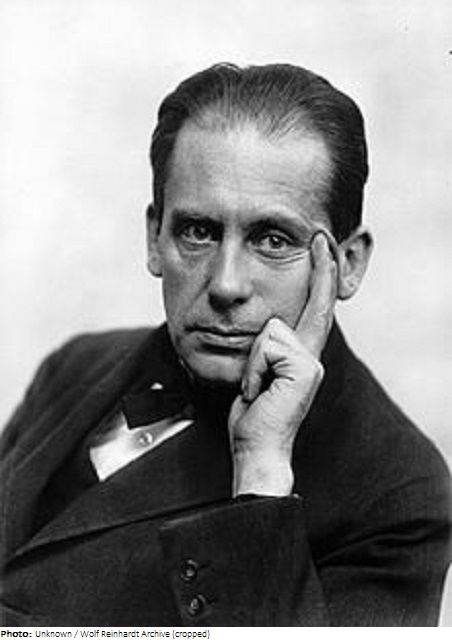Walter Gropius

Biographical information
| Roles | Competed in Olympic Games |
|---|---|
| Sex | Male |
| Full name | Walter Adolf Georg•Gropius |
| Used name | Walter•Gropius |
| Born | 18 May 1883 in Berlin, Berlin (GER) |
| Died | 5 July 1969 in Boston, Massachusetts (USA) |
| NOC |  Germany Germany |
Biography
Walter Gropius was the grandnephew of architect Martin Gropius, and the son of Walter Gropius, Sr. In 1910 Walter Gropius began an affair with Alma Mahler, the wife of composer Gustav Mahler and married her in 1915 after the composer’s death, but the marriage, however, ended in divorce in 1920. Three years later he married the journalist and writer Ilse Frank. In 1910, after working for two years with the firm of Peter Behrens, Gropius started his own business as a designer and architect without having achieved a degree, bringing with him fellow Behrens employee Adolf Meyer. In the 1920s his idiosyncratic style was called “New Construction / New Objectivity”. Like no one else, he influenced the design of industrial goods and is considered one of the pioneers of modern architecture.
After the 1st World War, Gropius took over the Grand-Ducal Saxon School of Arts and Crafts in Weimar (later Dessau), which became the Bauhaus School. He acted as its director from 1919-28, and is considered the leader of the Bauhaus Movement. Subsequently, he designed numerous residential projects like the Siemensstadt in Berlin.
In 1934 Gropius escaped from the Nazis, first to Great Britain, and then in 1937 to the United States, living in a suburb of Boston – Lincoln, Massachusetts. His ideas were later the basis for prefabricated housing in satellite towns of many major cities. Gropius taught at the Harvard Graduate School of Design and became a naturalized US citizen in 1944. In 1945 he co-founded The Architects’ Collaborative in Cambridge, Massachusetts, which became one of the most respected architectural firms in the world for the next 50 years, although the firm dissolved in bankruptcy in 1995. In 1967 Gropius became an Associate Member of the National Academy of Design and was elected a full member in 1968.
After World War II Gropius returned to Berlin and planned, amongst others, the so-called Gropiusstadt. Both the West and East German Post Offices issued stamps showing buildings that he designed during the Bauhaus era.
In 1927, the Municipal Authority of Halle advertised an architectural competition for a cultural center on the Lehmann’s rock with a town hall, a museum and sports facilities. Gropius’ “Hanging Gardens” design arranged the buildings in a way to best exploit the topography of the terrain. His design was probably too abstract for the local jury. Eventually none of the designs was realized.
Results
| Games | Discipline (Sport) / Event | NOC / Team | Pos | Medal | As | |
|---|---|---|---|---|---|---|
| 1932 Summer Olympics | Art Competitions |  GER GER |
Walter Gropius | |||
| Architecture, Further Entries, Open (Olympic) |